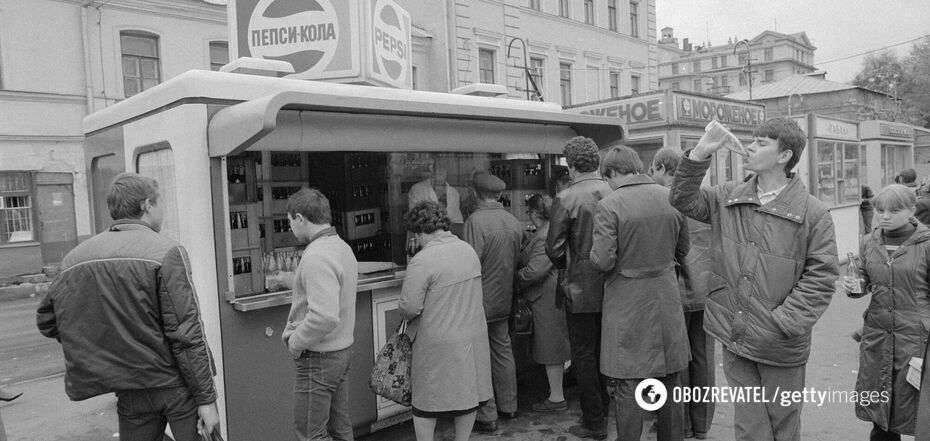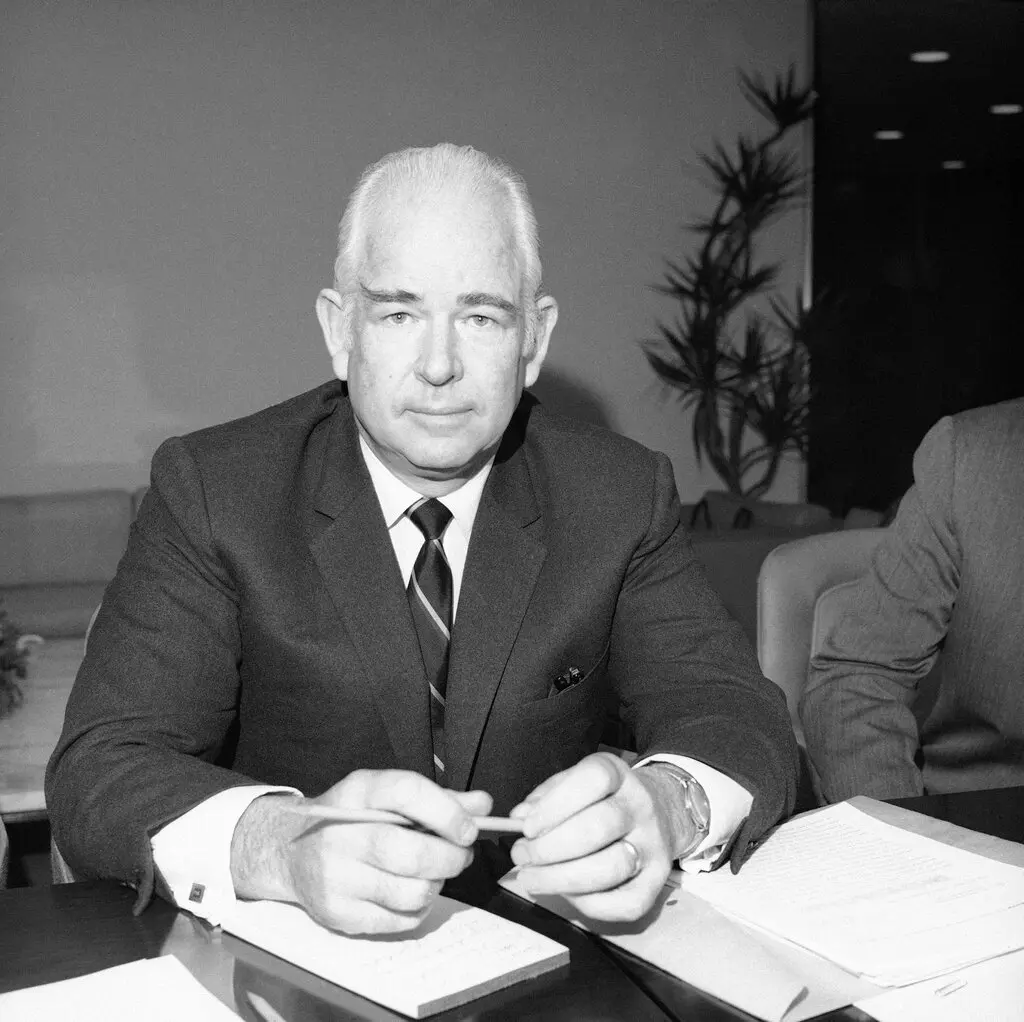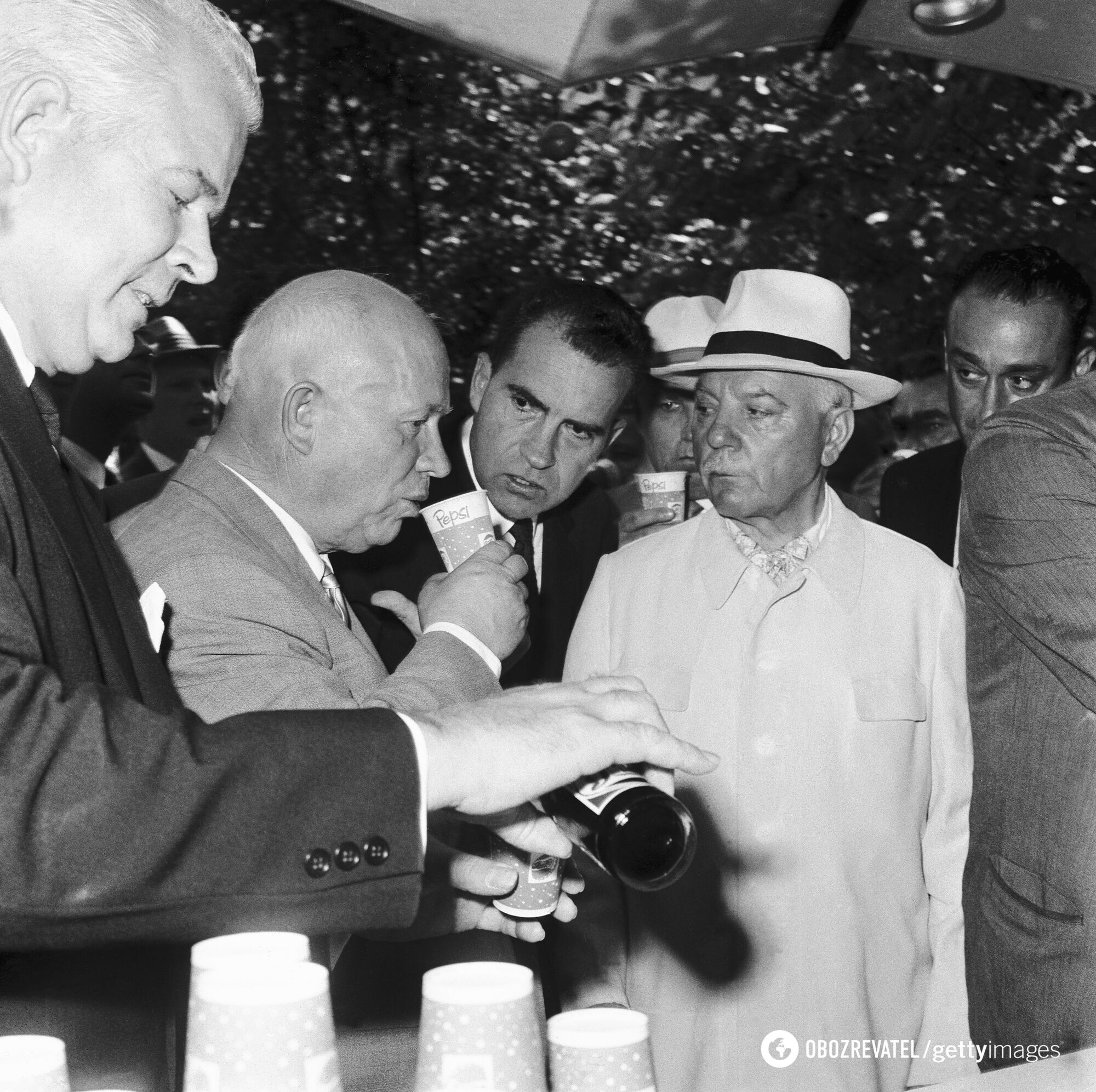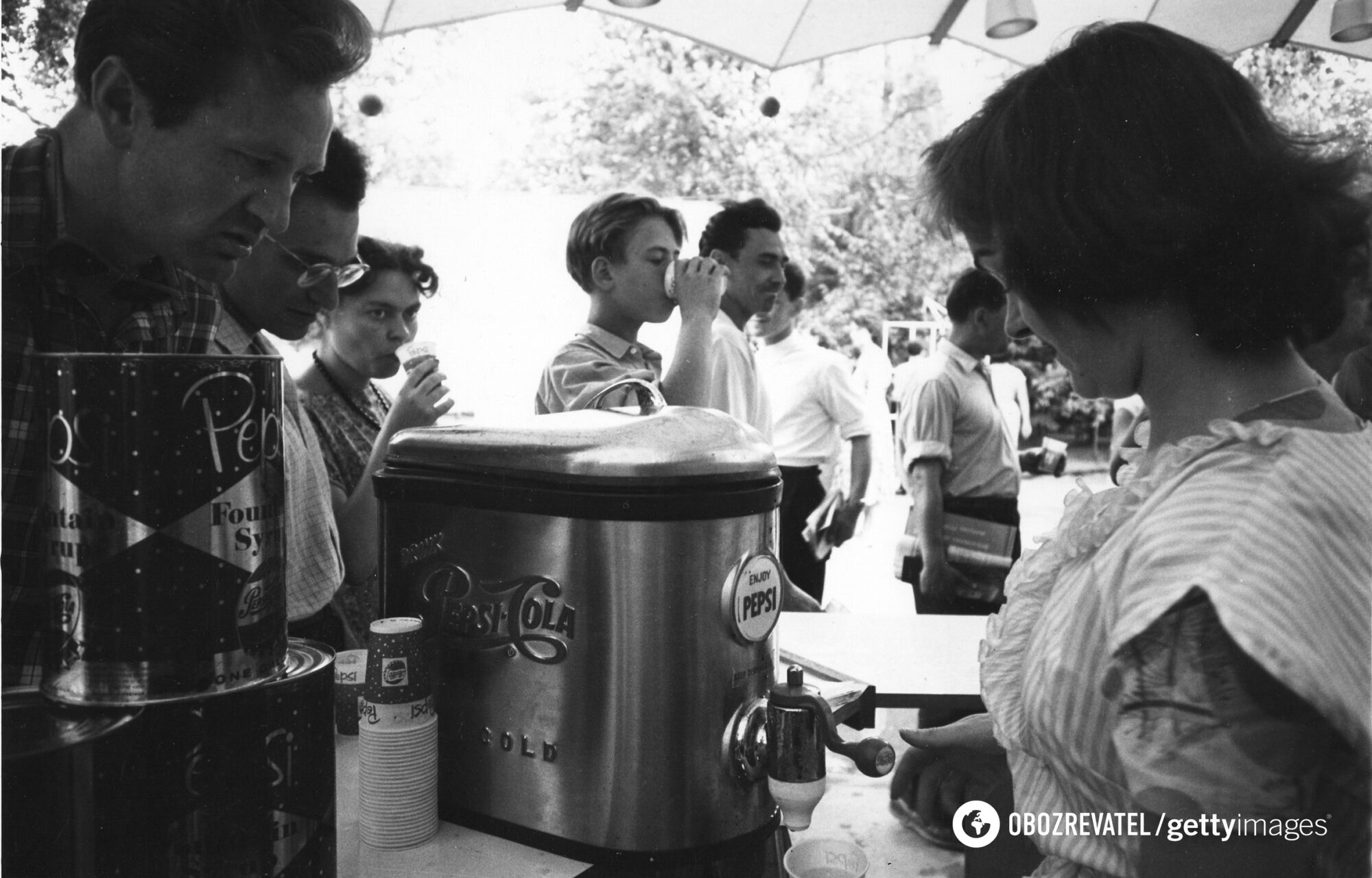News
Traded for vodka and even warships: how Pepsi got to the USSR
The food industry in the USSR was very backward, and those who lived through the collapse of the Union remember it well. Back then, unprecedented foods and sweets began to appear on store shelves very quickly.
However, some products familiar to Westerners still occasionally made their way behind the Iron Curtain. Sailors brought back sweet chewing gum from their voyages, and in the seventies, Pepsi managed to break through the blockade, which caused a real boom in the Union. OBOZ.UA tells how it happened.
Entering the Soviet market was the dream of Pepsi CEO Donald Kendall. For him, it was to be a huge victory over his main competitor, the Coca-Cola brand. The competition between the brands had been going on for decades, and such a success could really give one of them a huge advantage. So, when an American exhibition was organized in Moscow in 1959, he came with his drink and served it to the new general secretary of the country, Nikita Khrushchev. At that time, a photo of the head of state with a glass of fizz made the rounds in all the newspapers of the world.
Pepsi and Coca-Cola appeared in the United States almost simultaneously at the end of the nineteenth century and fought tirelessly for the market. The brands created an atmosphere of mystery around the recipe for their drinks and came up with unusual advertising campaigns and marketing ploys. But the real advantage could only come from entering other markets. Donald Kendall, head of Pepsi's marketing division, did just that.
However, it was the USSR that was a real fix for him. To get into one of the most closed countries in the world, which was not even a market economy, required a lot of effort. To achieve his goal, Kendall even made connections in the White House, becoming close to future President Richard Nixon.
When Nikita Khrushchev came to power in the USSR, he decided to focus on achieving great international success. In particular, he invested enormous effort and money to overtake the United States. He was the first to launch a satellite into space, and later he was the first to send a man into Earth's orbit.
To exchange experience with the United States, Khrushchev agreed with American President Dwight Eisenhower to hold mutual economic and industrial exhibitions. The Soviet side wanted to see what else could be copied from the Americans.
The American exhibition in Moscow began in the summer of 1959. Vice President Nixon flew in for its opening. However, many brands did not dare to participate in the event. Including Coca-Cola. And Donald Kendall took it as his personal chance. He not only presented Pepsi products at the exhibition but also personally visited Moscow. The businessman's goal was to hand the drink to Khrushchev and show it to the whole world. Nixon promised his friend to help him with this.
To pull this off, Nixon came up with a clever trick. As he led Khrushchev between the stands, the secretary general constantly criticized American products and praised their Soviet counterparts. At some point, the politicians ended up at the Pepsi booth. At this point, the US vice president played a trick. He suggested that the Soviet Secretary General decide for himself which soda was better – American or produced in the Soviet Union. At that time, Pepsi had no line in the USSR, so Khrushchev simply drank a few glasses of the American drink. He was allowed to proclaim the "Moscow" version to be the best, while photographers simply took a picture of him with the branded cup in his hands. The photo became a sensation.
The photo was spread across the world's newspapers. Journalists played on the American brand's advertising slogan "Be friendly, Pepsi will help!" Khrushchev's intention to be more open to the world was attributed to the drink. And the drink received huge publicity. And almost for free.
However, already in 1960, relations between the USSR and the United States deteriorated sharply, as the Vietnam War broke out, with both countries supporting different sides of the conflict. This was followed by the Cuban Missile Crisis and other points of confrontation.
But Kendall did not give up hope of entering the Soviet market. It happened in the days of Leonid Brezhnev in the early 1970s. By that time, the businessman had already headed Pepsi and began the process of promoting the brand in the socialist countries.
In 1970, he arrived in Moscow again for talks with the head of the Council of Ministers, Kosygin. To impress his counterpart, Kendall smuggled a radio in the shape of a Pepsi can past the guards and presented it to the head of the Soviet government. He liked the gift so much that he gave permission to start negotiations on the American company's entry into the USSR market.
But the drink had to be sold at a profit, and the official ruble-dollar exchange rate did not reflect reality. That's why the former American ambassador to the USSR, Lewellin Thompson, advised Kendall to exchange the gas for vodka. It took two years to negotiate this barter. However, on November 16, 1972, Pepsi announced that it would soon start selling its product in the Soviet Union. In return, it received the rights to the Stolichnaya vodka brand in the United States.
Pepsi opened its first bottling plant in the Union in the spring of 1974 in Novorossiysk. Subsequently, similar facilities were opened in Moscow, Leningrad, Kyiv, Tashkent, Tallinn, Yevpatoria, and other cities. The deal was not very profitable for the Americans, but Kendall managed to significantly reduce the gap in sales with Coca-Cola.
The term of Pepsi's agreement with the Soviet government expired in 1989. By this time, it was clear that the company was not satisfied with the exchange for vodka. And then Kendall went for the trick again. He took advantage of the catastrophic economic situation of the Soviet Union, which was on the verge of collapse, and concluded an agreement under which he received 20 old warships in exchange for the supply of raw materials and equipment: 17 submarines, a destroyer, a cruiser, and a torpedo battleship. The businessman sold all of them for scrap metal at a profit.
Under the terms of the deal, Pepsi also bought new oil tankers for a pittance and began leasing them out. Some of them were sold. "We're disarming the Soviet Union faster than you are," Kendall joked in a conversation with then-President George H.W. Bush's security adviser.
Already in 1990, Pepsi signed a contract with the Soviet Union based on the formula "vodka in exchange for Pepsi" for a fantastic amount of $3 billion. It was even called the "deal of the century". As a result, the Americans even managed to launch another of their brands in the USSR, Pizza Hut. But the deal did not last long. Within a year, the Soviet empire collapsed and Pepsi had to establish business relations with the independent states that emerged instead.
Subscribe to OBOZ.UA channels in Telegram and Viber to keep up with the latest events.






























